#Sir Lawrence Alma-Tadema
Text

Portrait of a Sailor, Lawrence Alma-Tadema, 1858
#art#art history#Lawrence Alma-Tadema#Sir Lawrence Alma-Tadema#portrait#portrait painting#poc in art#Academicism#Academic art#British art#English art#Anglo-Dutch art#19th century art#Victorian period#Victorian art#oil on paper#Walters Art Museum
427 notes
·
View notes
Text
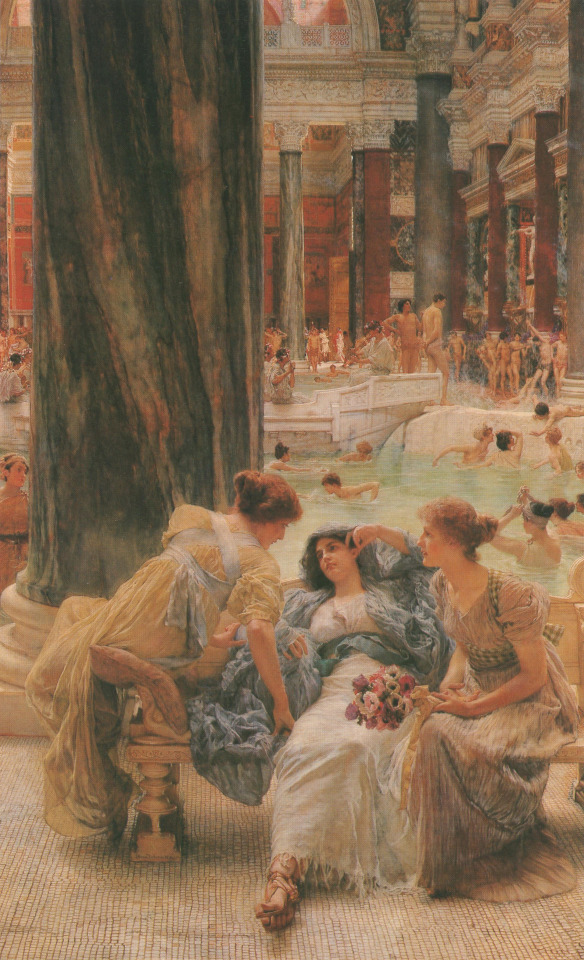
Sir Lawrence Alma-Tadema (Dutch-British, 1836-1912)
Baths of Caracalla, 1889
#Sir Lawrence Alma-Tadema#Sir Lawrence Alma Tadema#Lawrence Alma Tadema#Lawrence Alma-Tadema#art#fine art#classical art#european art#europe#european#oil painting#fine arts#europa#mediterranean#cradle of civilization#roman bath#baths of caracalla#southern europe#island kingdom#england#dutch#dutch art#british#british art#bathers#baths of caracalla 1889
221 notes
·
View notes
Text


slut! // is it over now?
#im sorry i know i keep making variations of this parallel but i love it#my edit#taylor swift#1989#1989 taylor's version#1989 tv#is it over now?#clean#haylor#tswiftlyrics#lyric edit#taylor swift lyrics#tswiftedit#typography#lyric parallels#taylor swift lyric parallels#1989 lyric parallels#art#paintings#sir lawrence alma-tadema#art details#classical art#oil painting#classic art#oil on canvas
173 notes
·
View notes
Text
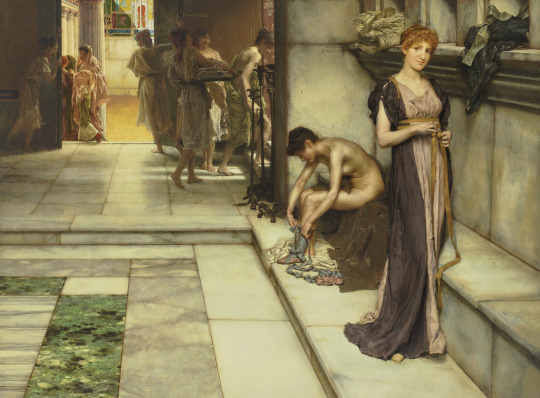
Sir Lawrence Alma-Tadema (1836-1912) - An apodyterium
Oil on panel. Painted in 1886.
17.9 x 24 inches, 45.3 x 61 cm. Estimate: US$300,000-500,000.
Sold Christie's, New York, 11 Nov 2023 for US$428,400 incl B.P.
The apodyterium was the entrance and changing room for a public bath in the Roman period.
104 notes
·
View notes
Text

Woman and Flowers
Sir Lawrence Alma-Tadema (Dutch (active in
England), 1836-1912)
1868
Oil on panel
30 notes
·
View notes
Photo
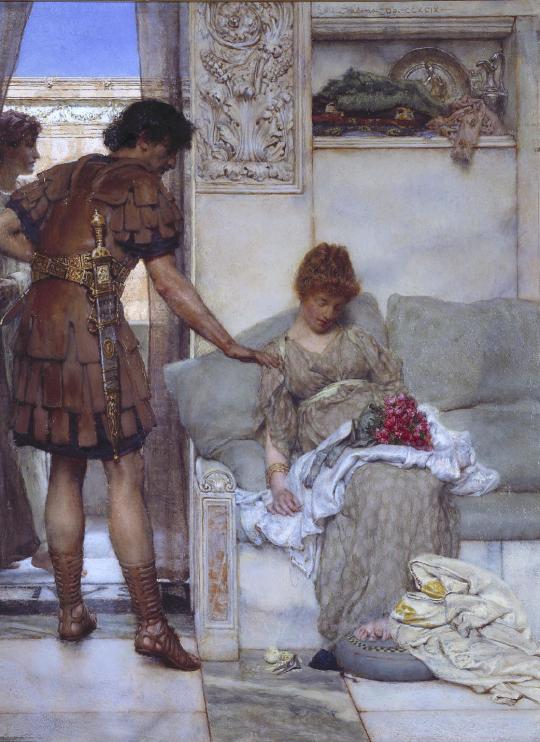
A Silent Greeting, Sir Lawrence Alma-Tadema, 1889
#a silent greeting#sir lawrence alma-tadema#Lawrence alma-tadema#alma tadema#alma-tademe#1889#1880s#1800s#19th century#painting#art
143 notes
·
View notes
Text


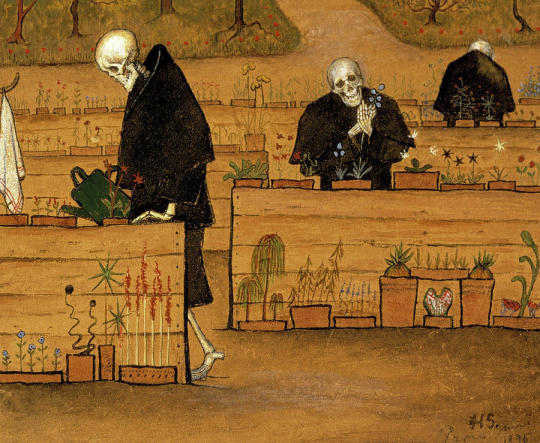
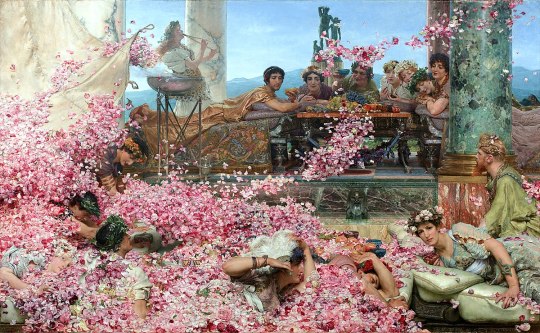

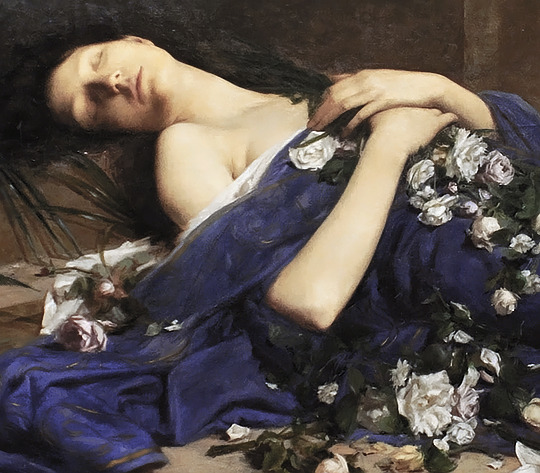


rock and hard place - better call saul / garden song - phoebe bridgers / the garden of death - hugo simberg / the roses of heliogabalus - sir lawrence alma tadema / sheep in fog - sylvia plath / martyr in the catacombs - jules cyrille cavé / ophelia - fredrich wilhelm theodor heyser / edvard munch
#ill never let go nacho!#better call saul#bcs#rock and hard place#bcs 6x03#nacho varga#phoebe bridgers#garden song#punisher phoebe bridgers#the garden of death#hugo simberg#the roses of heliogabalus#sir lawrence alma-tadema#sylvia plath#martyr in the catacombs#jules cyrille cavé#ophelia#fredrich wilheom theodor heyser#edvard munch#word weaving#word weaves#moonstone's word weaves
141 notes
·
View notes
Text
🎨Alma-Tadema 🎨
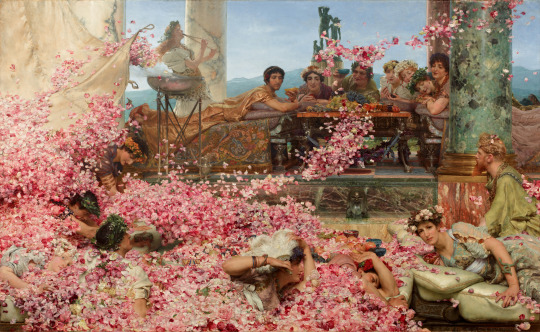
Sir Lawrence Alma-Tadema - The Roses of Heliogabalus - 1888
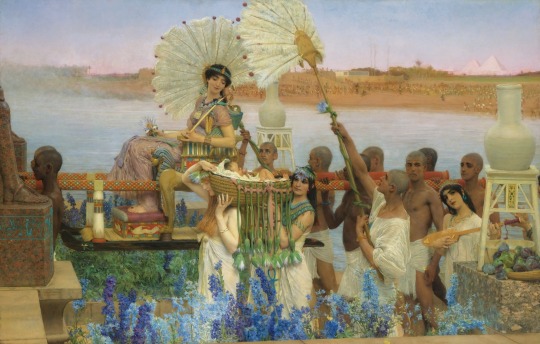
Lawrence Alma-Tadema - The Finding of Moses, 1904

Lawrence Alma-Tadema - The Three Graces
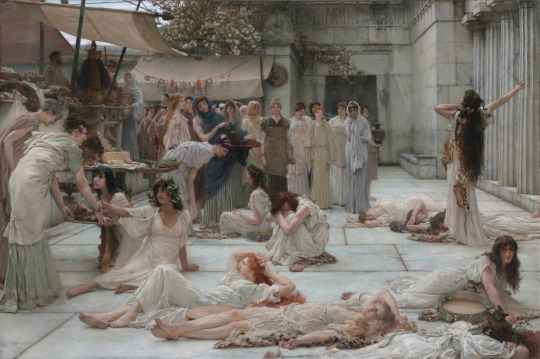
Lawrence Alma-Tadema - The Women of Amphissa, 1887
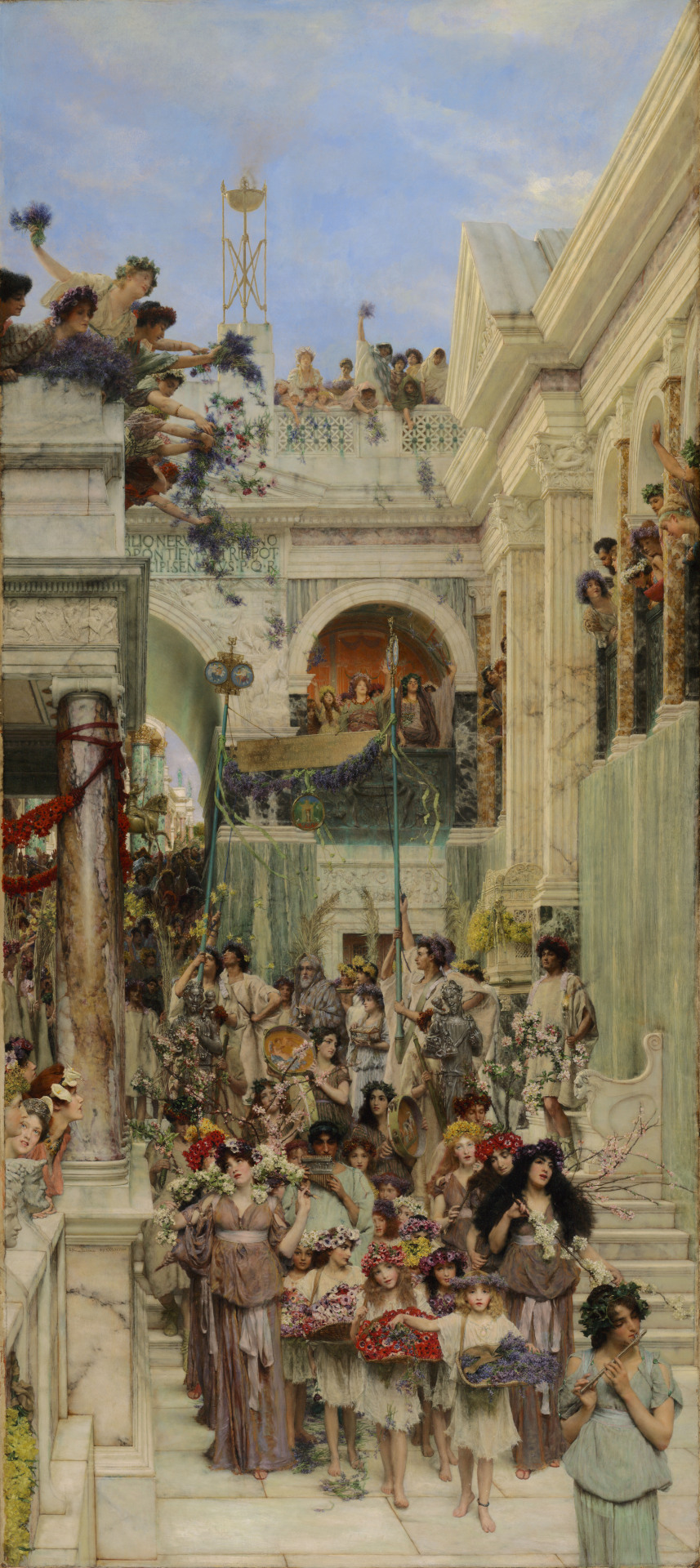
Lawrence Alma-Tadema - Spring - 1894

Lawrence Alma-Tadema - Unconscious Rivals - 1893

Lawrence Alma-Tadema - The Education of the Children of Clovis - 1861

Lawrence Alma-Tadema - Sappho and Alcaeus -1881 [depicts Sappho and her companions listening as the poet Alcaeus of Mytilene plays a kithara]
#art#paintings#sir lawrence alma-tadema#lawrence alma tadema#alma tadema#sappho#alcaeus#spring#amphissa#the roses of heliogabalus#moses
15 notes
·
View notes
Text

Sir Lawrence Alma-Tadema - Agrippina with the ashes of Germanicus, 1886.
#Sir Lawrence Alma-Tadema#Agrippina with the ashes of Germanicus#agrippina#ashes#urn#death#mourning#hooded#melancholy
24 notes
·
View notes
Text
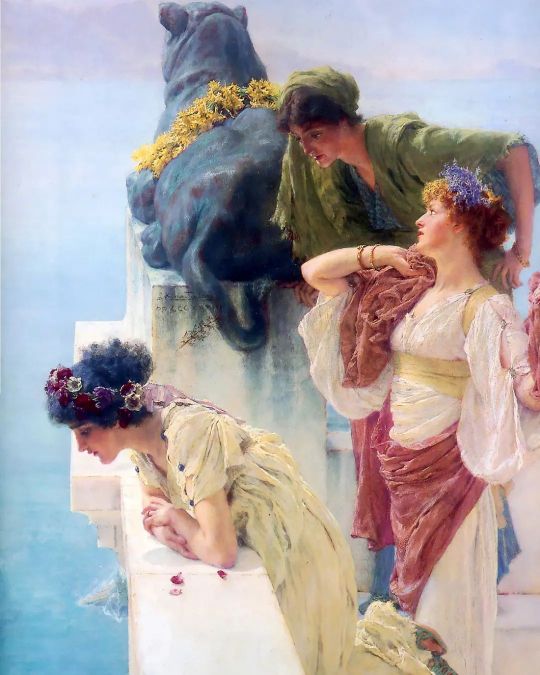
<3
#instagram#pinterest#art#classic art#painting#oil on canvas#romantic art#victorian art#romantic period#victorian period#victorian era#classic#romantic era#history#art history#coign of vantage#Sir Lawrence Alma-Tadema#19th century#girlhood#women#friendship
13 notes
·
View notes
Text
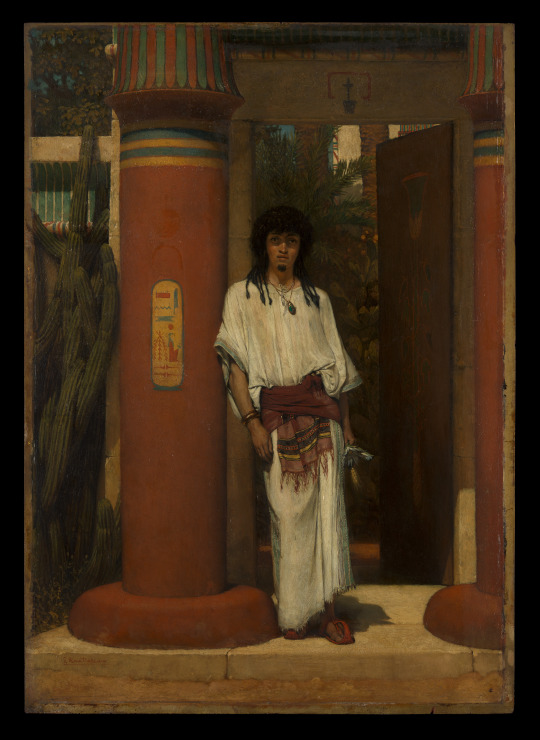
An Egyptian in a Doorway, Lawrence Alma-Tadema, 1865
#art#art history#Lawrence Alma-Tadema#Sir Lawrence Alma-Tadema#historical painting#ancient history#Egypt#Ancient Egypt#genre painting#Academicism#Academic art#British art#English art#Anglo-Dutch art#19th century art#Victorian period#Victorian art#oil on canvas#Metropolitan Museum of Art
279 notes
·
View notes
Text
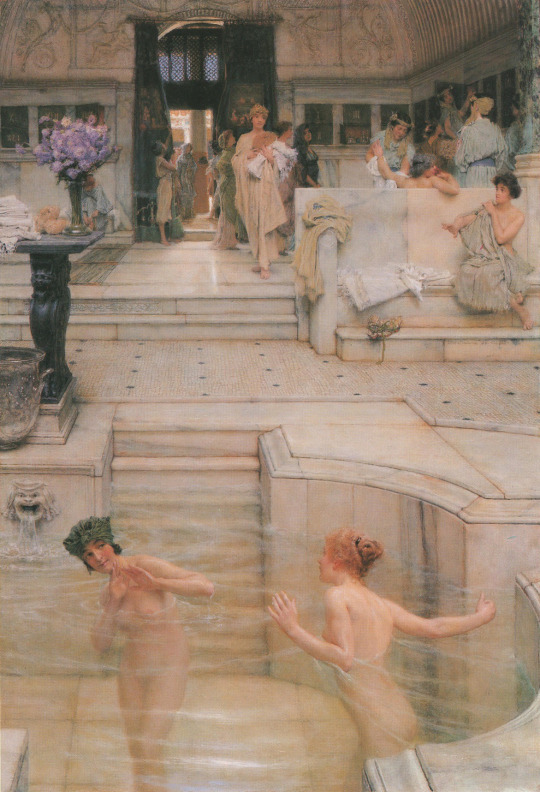
Sir Lawrence Alma-Tadema (Dutch-British, 1836-1912)
A Favourite Custom, 1909
#different colour and quality#Sir Lawrence Alma-Tadema#art#Sir Lawrence Alma Tadema#Lawrence Alma Tadema#fine art#european art#classical art#europe#european#oil painting#fine arts#europa#mediterranean#dutch art#dutch#british#british art#island kingdon#england#southern europe#cradle of civilization#rome#latin#greece#roman#roman ladies having fun#a favourite custom#lawrence alma tadema#tadema
239 notes
·
View notes
Photo


#sir lawrence alma-tadema#pompey the great#ancient rome#victorian era#19th century edit#19th century art#art#victorian art#perioddramasource#painting#history fashion#history art
34 notes
·
View notes
Text
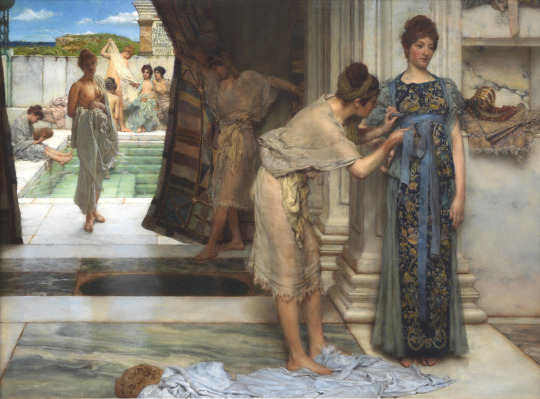
Sir Lawrence Alma-Tadema (1836-1912) - The frigidarium
Oil on panel. Painted in 1890.
17.75 x 23.5 inches, 45 x 59.7 cm. Estimate: £500,000-700,000.
Sold Sotheby's, London, 7 Dec 2023 for £635,000 incl B.P.
The frigidarium was the cold water pool in the public baths in the Roman period.
27 notes
·
View notes
Photo


Cybèle et Amphitrite by Paul Baudry + Cybele & the Legend of Claudia Quinta, ancestor of Livia in Matthew Dennison, Livia, Empress of Rome
CATULLUS READING HIS POEMS AT LESBIA'S HOUSE by Sir Lawrence Alma-Tadema + Lesbia, aka Clodia Metelli, ancestor of Livia in Matthew Dennison, Livia, Empress of Rome
She was a girl. Instead, within a century, her cult would be worshipped across the breadth of the Mediterranean world and beyond; her features chiselled from marble and basalt in temples remote from Rome; her name invoked in marriage ceremonies and written histories and inscribed on provincial coinage alongside the legend ‘Mother of the World’; her likeness affiliated to personifications of an empires chosen virtues. At the dies lustricus she received from her family two names: Livia Drusilla. For much of her life—and by history—she would be known by the former.
The name of Livia has survived through two millennia, even into generations unfamiliar with ancient history and Rome’s written sources. It resonates beyond the confines of any armarium or noble atrium, bolder but less easily read than the soft translucency of a portrait carved from wax. It is spiced with accretions of legend and malice...sharp-tasting...contentious...perhaps even dangerous. Its associations embrace good and bad: synonymous with lust for power or the exemplary virtue Romans prized in their women. Livia is a villain; Livia is a victim.
—Matthew Dennison, Livia, Empress of Rome
#Sir Lawrence Alma-Tadema#Lesbia#Clodia Metelli#Claudii#Livia#Livia Drusilla#Cybele#Augustii#Matthew Dennison#Roman history
5 notes
·
View notes
Text
Explaining One of VTMB Paintings (part 15)
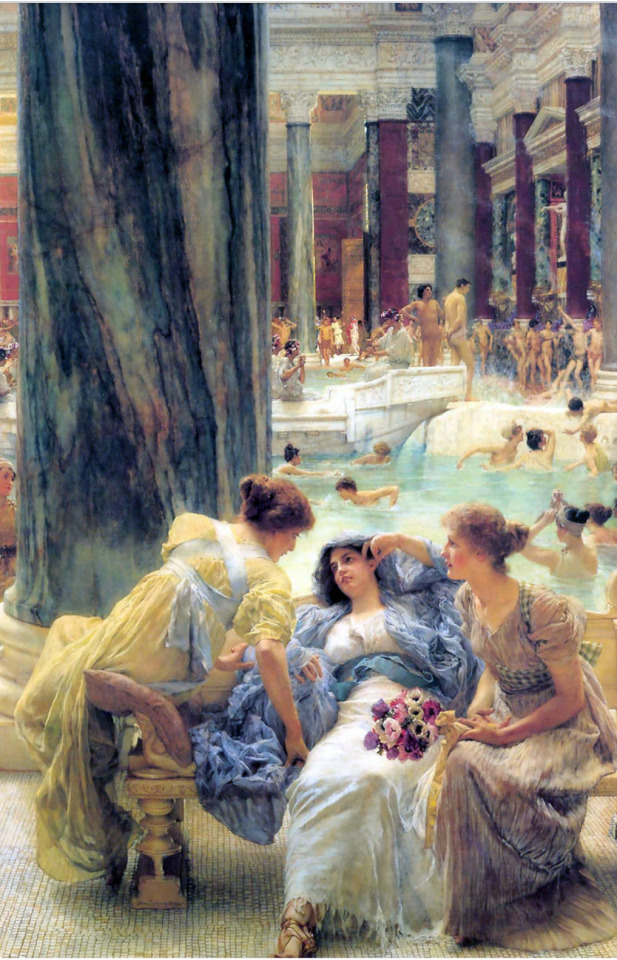
The Baths of Caracalla, oil on canvas (1899) by Sir Lawrence Alma-Tadema
Sir Lawrence Alma-Tadema(Jan 8 1836- Jun 25 1912) was a Dutch painter born in Dronryp , Netherlands and later became a UK denizen(an old legal status were you were able to own land and like in the UK without being a Citizen but still enjoying most of the rights). His art styles include both Romanticism (which this painting is) and Neoclassical.Before 1860s many of his works were of Merovingian subjects(Merovingian Dynasty was a Frankish(Germanic people who lived in what’s now part of Modern day France) ruling family in power from the mid 5th century to 751). His painting The Clotilde and the Tomb of her Grandchildren [1859 ](see below) is an example of Merovingian subject matter in a NeoClassical style. Despite his foundness Merovingian subject was not very popular on the international art market so he switched to painting focused on more popular subjects to depict in his artwork mostly focused on as historic/ ancient Egyptian, Roman and Greek subjects and events.

The Clotilde and the Tomb of her Grandchildren, oil on canvas (1858) by Sir Lawrence Alma-Tadema
Romantic art focused on emotions, feelings, and moods of all kinds including spirituality, imagination, mystery, and fervor. The subject matter varied widely including landscapes, religion, revolution, and peaceful beauty. The brushwork for romantic art became looser and less precise. The great Romantic artist Caspar David Friedrich summed up Romanticism saying "the artist's feeling is his law".
The Baths of Caracalla is a real Roman public bath built in Rome, Italy (the second largest in the city) sometime between 212 AD and 217 AD and was in operation until around 537 AD when it fell into disuse. The paining shows the historical imagination of what the baths would have looked like during the height of its popularity as it would be a major social space public space.
Historically Roman public baths acted as community centers where free and included access to a wide verity of atonal features such as gymnasiums for men to exercise; statues, murals and other public works of art; restaurants to buy multiple types of food and even a library that allowed everyday Roman citizens access to literature works they wouldn’t be able to offers to buy. Roman Public baths acted as not only bath houses but as a Library, gym, spa, restaurant and public art gallery. The waters of the baths were heated by a hypocaust, a heating system where coal and wood is burned under the ground.

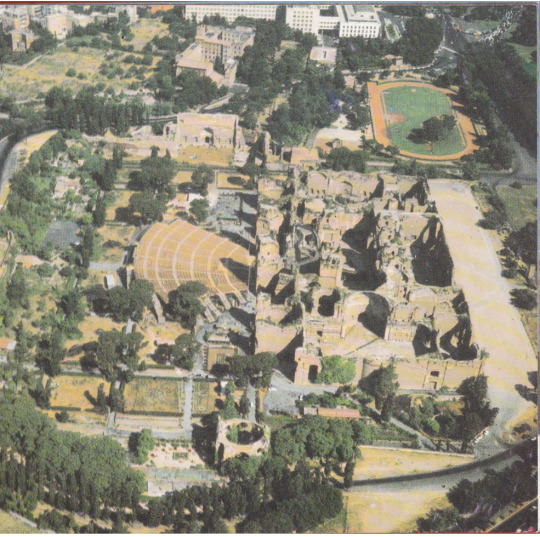
The baths were most likely built by emperor Septimius Severus (part of the Severan Family) as they are located in the southern part of Rome where during that time members of Severan family were known to commission a number of public works in that specific area of the city for political favor. The site the baths were built on where originally part of a Garden estate known as horti Asiniani by Gaius Asiniani Pollio during the reign of Augustus( first emperor of Rome 63 BC to 14 AD, so about 200 to 260 years before the construction of the baths). The Garden was home to a number of sculptures such as the Farnese Bull which were kept as part of the public art displays of the baths when they were in use. During the height of its popularity the baths are estimated to have a daily capacity of 6,000 to 8,000 visitors a day.

Farnese Bull, marble sculpture (2nd century BC) by Apollonius of Tralles
Even after falling into ruin the Caracalla baths still found use as in the 14th century a Christian pilgrim site was set up near by due to the proximity to the Church of Saint Nereo e Achilleo( built facing the baths in the 4th century) and was used by the pilgrims as their main water source. But in 537 AD during the war of the Gothic war the city’s water supply was cut by Vitiges of the Ostrogoths and the baths were once again abandoned.

During the 6th and 7th century the baths were still in the very sparely populated area of Rome and were used to burry pilgrims who died in the xenodochium ( hospital specifically for treatment of foreign pilgrims) of the Church of Saint Nereo e Achilleo. Then starting in the 12 century the baths were used as a quarry for stone and decorative masonry that were often used in the construction of churches. In the 15th century Pope Pius II used stone from the baths in the construction of the Loggia of the Benediction (fancy decorative balcony used by the Pope) at St Peters Basilica, Vatican City. (See photo below)
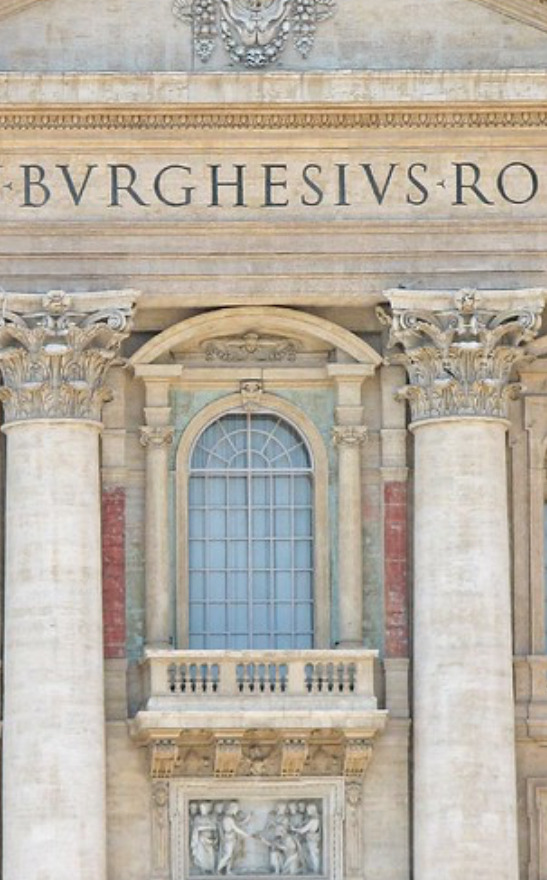
it wasn’t until the 16th and 18th century when interest in restoring the Baths as a historic site began. With the excavation of the baths beginning in 1824 by Count Egidio di Velo.
The Baths of Caracalla have been a popular subject of a number of different art works over the years by a wide number of artist who ether are depicting historical scenes of artist imaginations of the baths in its prime or capturing architectural beauty that remained even after it fell into ruin. (see examples below)

Baths of Caracalla Rome: interior of the Tepidarium, watercolor (1845) C.R. Cockerell and assistant Jackson used in lecture of architecture. Image based on illustration based of detailed restoration done on the baths found in a book published by French architect G.A Blouet in 1828.

Interior of the Baths of Caracalla, print if etching with watercolor and gouache(circa 1780) by Swis painter and engraver Abraham-Louis-Rodolphe Ducros.
#vampire the masquerade bloodlines#VTMB#explaining one of vtmb paintings#art history#romanticism#The baths of Caracalla#Ancient Roman#Sir Lawrence Alma-Tadema
1 note
·
View note